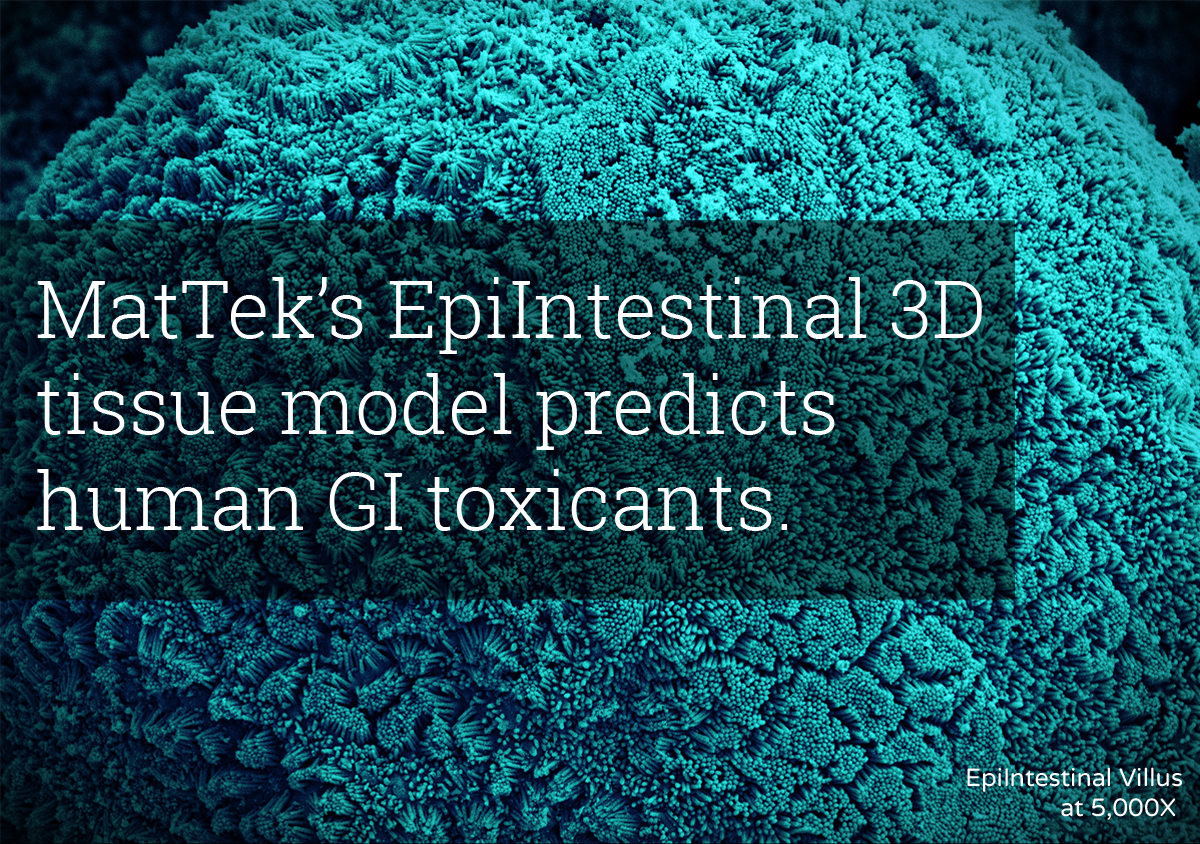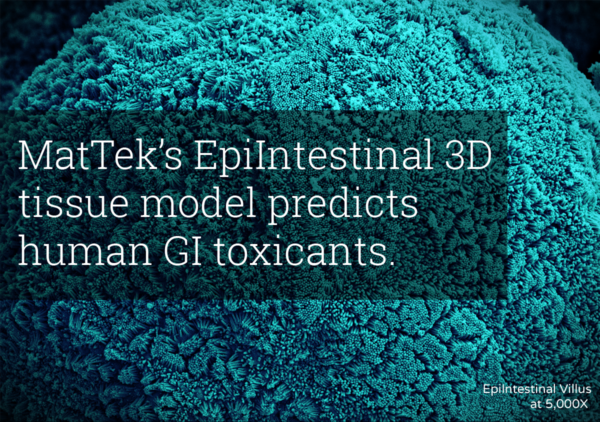Predicting GI Toxicity in vitro

Mattek is presenting its EpiIntestinal predictive
toxicology assay at SOT next week.

Visit our poster to learn more:
Use of a New Human Small Intestinal Tissue Model to Screen Drug Induced Gastrointestinal Toxicity Abstract: 3069 Poster: P221
Wednesday, March 16 1:15 PM to 4:45 PM CC Exhibit Hall Poster Session: Alternative In Vitro Toxicity Models Recent Advances in Safety Assessment Author Attended: 1:15 PM–2:45 PM
S. Ayehunie2, M. Wagoner1, H. Barthlow1, C. Scott1, Z. Stevens2, T. Landry2, A. Armento2, M. Klausner2 and P. Hayden2. 1AstraZeneca, Waltham, MA and 2R&D, Mattek Corporation, Ashland, MA.
The mechanisms of drug-induced gastrointestinal (GI) toxicity are often poorly understood, in large part due to the lack of physiologically relevant in vitro models. The inherent physiology differences between humans and preclinical animal models add another layer of complexity in interpreting GI toxicity studies. The objective of this work was to evaluate the utility of a new in vitro primary human cell-based small intestinal (SMI) tissue model to predict drug-induced GI toxicity. A blinded study was performed using 8 therapeutic compounds, including 5 for which dog and rat GLP toxicity studies were not predictive of human GI toxicity. These 5 compounds were selected from discontinued AstraZeneca clinical development programs and represent a diverse set of target classes and chemistries. As negative controls, the 3 other drugs included in this study were well tolerated in humans. To model GI toxicity, we examined cytotoxicity by MTT viability and LDH release assays and tissue barrier integrity using transepithelial electrical resistance (TEER) measurements, following two repeat exposures over 96 hours. The SMI model detected drug-induced disruption of intestinal barrier function (TEER) in 5/5 problematic drugs at concentrations up to 30 fold below clinical exposure levels. Importantly, the SMI tissue showed no effect at concentrations up to 1,000 fold higher than the clinical exposure levels for the three negative controls. Overall, TEER measurements in the SMI tissue were a sensitive, predictive tool to assess clinically relevant exposures of drugs that induced human GI toxicity that were incorrectly predicted in preclinical GLP toxicology studies. These results suggest that the in vitro system will serve as a useful tool for both investigational and traditional GI drug safety studies.
Can’t make it? Request a copy of the poster.
Schedule a meeting: Dr. Seyoum Ayehunie sayehunie@mattek.com
Learn more about EpiIntestinal.

